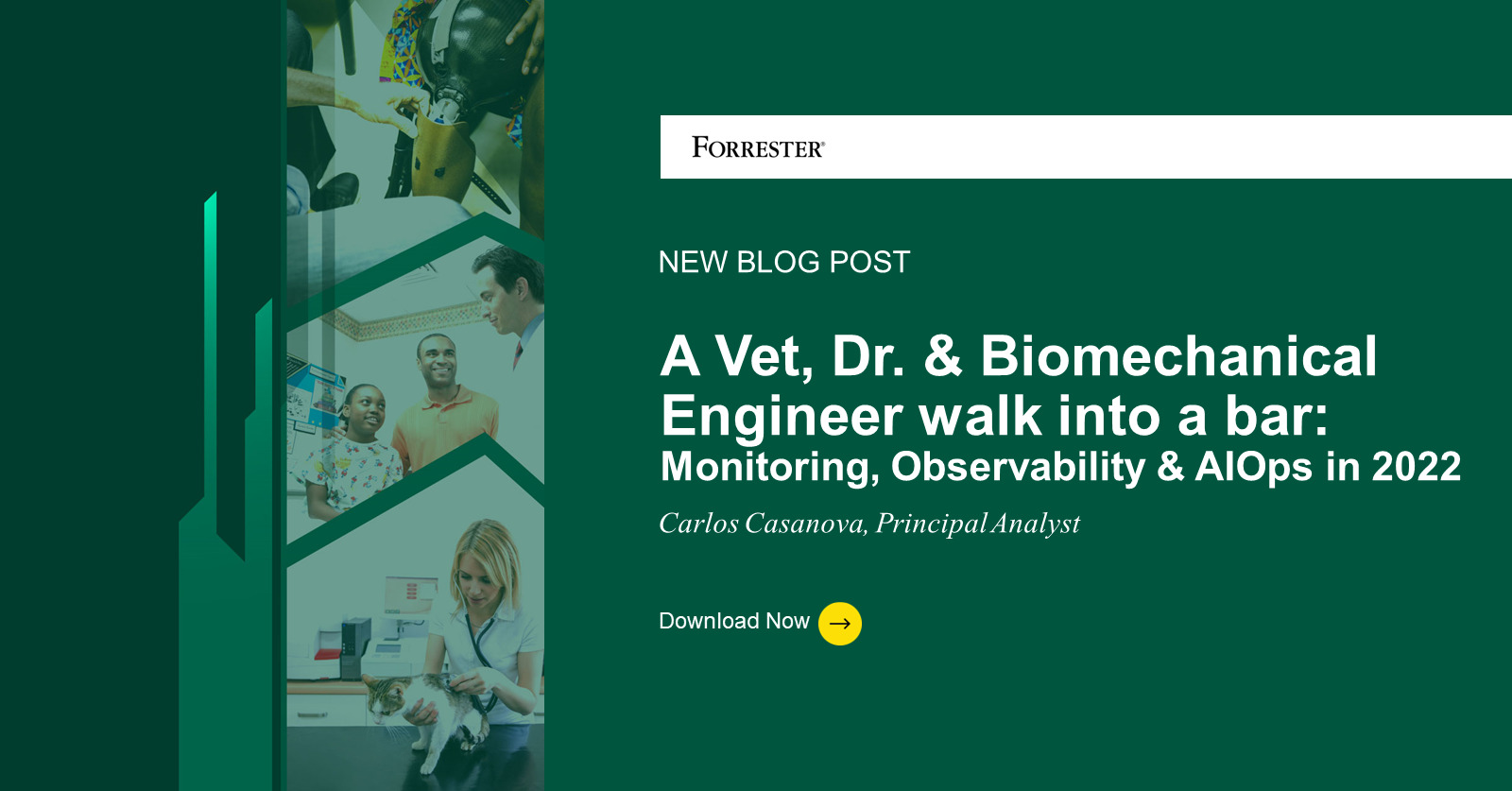Who Knew That A Veterinarian Was A Monitoring Specialist?
When you think about traditional monitoring, it’s about looking at a mostly nonresponsive entity and inferring what is going on with it. When you bring your new puppy to the vet, your pet can’t answer the questions it’s asked. It simply behaves in its own way, and the vet must watch and infer what it is that might be wrong based on little or no direct feedback from the patient. The same holds true for a server or application that is being monitored. It may provide some baseline information, but otherwise, it’s just going to give you those puppy dog eyes and hope you can help cure its ailment.
Physician 2.0, Your Observability Engineer
Moving from a veterinarian to a physician is not about the provider but about the patient. The physician has the opportunity to get actual feedback when treating a human patient. They can ask the patient what hurts, what’s worked in the past, and how they tolerate certain treatments. As I’ve discussed, the patient must be willing to share that information; otherwise, we slide back toward monitoring. This is partly why treating pediatric patients is so difficult: They don’t always share or know how to share details about what is going on with them. In our IT environment, devices and systems that aren’t willing to share details about their internal workings are difficult to treat — very much like any incommunicable patient who can’t or won’t share how they feel or what is wrong.
Enter The World Of A Biomechanical Engineer, Your AIOps Savior
Biomechanical engineers design systems that are partly mechanical and partly software for the betterment of human life. These systems work with the integral parts of the human anatomy and, when combined with biomedical and neural engineering, even connect with the human nervous system to provide real-time and even predictive healthcare solutions. These biomechanical solutions consume real-time human metrics and provide capabilities needed at that moment in time to ensure the systems stay running and provide the best possible experience. They build upon the monitoring and observation skills and then add advanced techniques to enhance what is possible. Does this sound familiar? Aren’t they some of the same objectives we have for AIOps?
Stop Looking At Them Discretely; They’re A Continuum That You Must Map Out
As I just described, the three areas are all valuable and provide benefits to their patients. In the IT space, there is a natural progression from monitoring through observability and on to AIOps. These are not mutually exclusive needs but supportive and additive to the prior one. Organizations have and will always utilize all three approaches in their IT environments depending on the objectives and patient type. Older and poorly designed systems may need an exceptional veterinarian (aka monitoring), while a modern-day cloud-native system may need a biomechanical engineer (aka AIOps). Pick your IT healthcare provider wisely.
Join The Conversation
I invite you to reach out to me through social media if you want to provide general feedback. If you prefer more formal or private discussions, email inquiry@forrester.com to set up a meeting! Click Carlos at Forrester.com to follow my research and continue the discussion.
